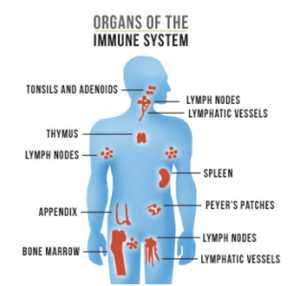A human body has an inbuilt immune system comprising of different parts which work together by defending against the disease-causing microorganism.

Hence it is referred to as the body’s best defensive system. This system functions against infringing microorganisms and keeps us healthy.
Sometimes foreign materials, manage to invade successfully. When this happens, the body depends on the immune system for a response. This system functions in several ways:
- The thymus gland, tissues of the bone marrow, the spleen and the lymph nodes synthesize white blood cells (WBC’s) that are specialized cells, functions by destroying foreign organisms.
- The white blood cells synthesize -A nonspecific response to injury or infection and proteins known as antibodies that are part of a particular immune response to foreign particles.
The immune system has specialized cells called white blood cells that recognize foreign materials in the body and respond. The number of white blood cells in the blood can increase during an immune response.
These cells travel through the circulatory system and the lymphatic system to an injured or infected area of the body. White blood cells leave the blood vessels and travel into the damaged tissue, where the immune response takes place.
The immune system responds to attack.
Certain illnesses can cause symptoms such as coughing, sneezing, and fever. These symptoms make you uncomfortable when you are sick. But in fact, most symptoms are the result of the immune system responding to foreign materials in the body. The immune system responds in two ways.
- At first, white blood cells (WBC’s) respond to the site where infection or injury occurs and attack the foreign particles in a nonspecific response. Few of these cells attack pathogens by producing chemicals which help other white blood cells to perform better.
- The second step in responding is very precise to the types of pathogens that invade the body. These white blood cells generate antibodies targeting each pathogen and provide immunity to our body.











